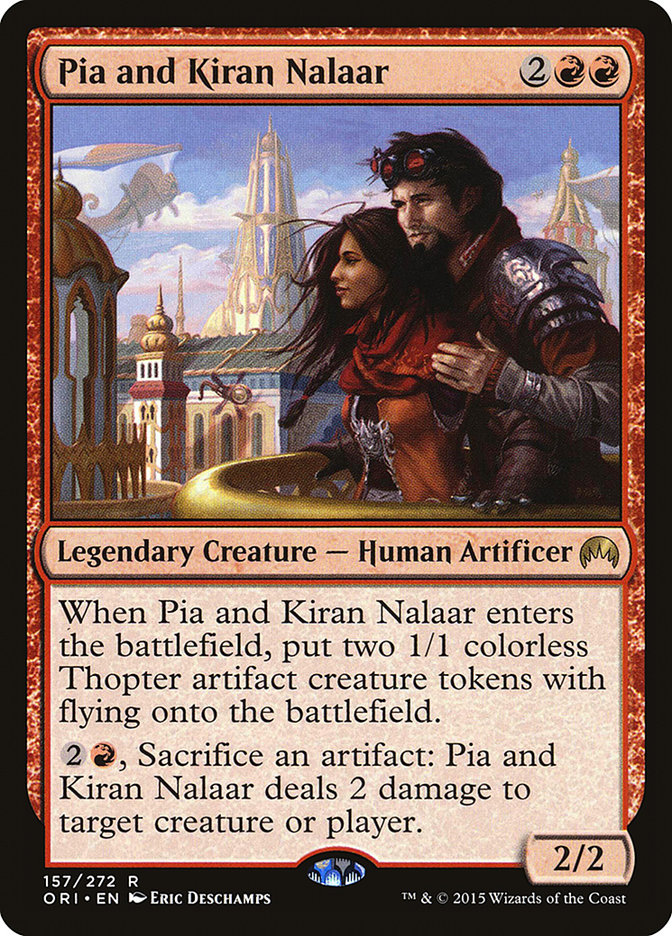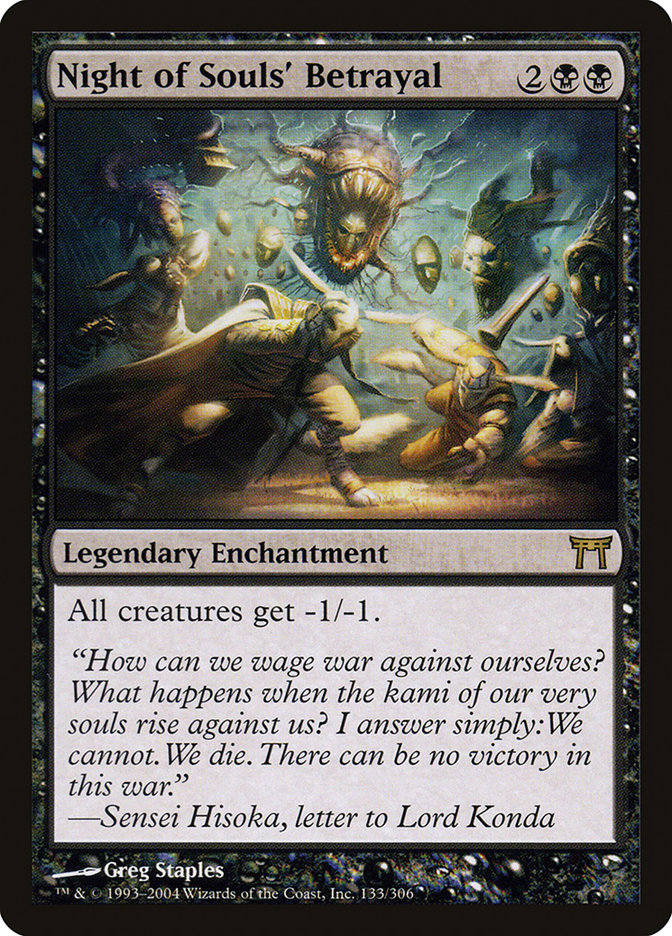In the process of composing my article from last week, I
inadvertently realized that my planned decks for the Regional PTQ and Grand Prix in Indianapolis last weekend were both somewhat outside my own comfort
range. This happy coincidence afforded me an excellent opportunity to put my own advice into practice and report on the results.
Interestingly, both of the decks I chose, while outside of my own comfort zone, are decks that are favored by the wider Magic community: They are midrange
decks. I have been biased against midrange decks because they always appear too unfocused to me.
With decks that are on the more extreme ends of the spectrum, you try to impose your own gameplan on the majority of your opponents, with the rare
exception of finding a deck that is even more extreme. With a midrange deck, you have to be more malleable, typically adjusting your gameplan for every
game based on a variety of factors including your opponent’s deck, playstyle, and approach to the matchup–even your specific draw that game.
While most players value that kind of flexibility, I typically feel disadvantaged since your deck is not designed with any of these gameplans in mind, and
the task of devising the correct gameplan is daunting. There is some comfort in knowing exactly what you are trying to do each game and some satisfaction
in executing that gameplan even in the face of an opponent that knows what is coming.
However, there are certainly advantages to being a midrange deck. First, your relative lack of focus allows you to employ only the most powerful cards.
Having such a high individual card quality allows you to frequently overpower your opponent as long as you can break up their more powerful curves and
synergies. It also makes you naturally advantaged in any topdeck war, and it makes mulligans less punishing.
Furthermore, midrange decks are often insulated from hate cards by virtue of their flexibility. Spending years with my battlefields of cheap creatures
getting blown up by a sweeper, or running a combo deck that falls victim to well-prepared sideboards has made me envious of those who play archetypes that
are more naturally resilient.
With these principles in mind, I would like to take you through the thought processes that led to my decision to play each of the decks I chose last
weekend, my experiences playing those decks, and what I have learned going forward from this midrange experiment of sorts.
RPTQ – Modern Jund
Since Birthing Pod was banned earlier this year, I have seen my success in Modern plummet. Pod was close to the perfect deck for me: an aggressive yet
resilient creature deck with a combo element and an incredible level of customization to keep you ahead of the metagame and keep your opponents unsure of
what you are capable of.
With its removal from the format, I have been fruitless in finding another deck that I have felt comfortable with despite devoting significant time to
learning them. Modern is a format that rewards deck knowledge, especially because I play it significantly less often than Standard, so I would prefer to
have a go-to deck with some possible back-up options if my top choice is poorly positioned for a given tournament.
For the RPTQ, I wanted a generically powerful deck, and the only combo deck that piqued my interest was Amulet Bloom, a deck with a learning curve that I
ultimately deemed too daunting. With my interest in the Twin variants waning, I decided to play Jund. The midrangiest of midranges. With the help of
teammates Michael Majors and Brad Nelson, I arrived at the following list:
Creatures (13)
Planeswalkers (4)
Lands (24)
Spells (19)

There isn’t a lot to talk about here, as it is a fairly stock list, but I will highlight some of the less common choices:
This card has started to see fringe play in Jund and Grixis but has yet to become stock. I favored the card primarily because the midrange mirrors in
Modern involve a lot of resources trading since there is so much good removal in those decks. As such, having a powerful creature that is virtually
impossible to trade with at parity is excellent. Additionally, Pia and Kiran can put in solid work against aggressive decks like Affinity and Merfolk, and
even a combo deck like Infect. I expect this card to continue to increase in popularity to the point of becoming commonplace.
This card is very popular, and my decision to only play a single copy was largely driven by the advice of Brad Nelson, who argued that it has lost a lot of
effectiveness as people have become aware of its existence. I prefer to have my removal spells be as cheap as possible since the deck has enough power to
win as long as you do not fall behind. I would, however, play more copies of this card in fields that are replete with other midrange decks, as its
versatility and ability to generate card advantage in those matchups is important.
I did not get an opportunity to use this card in the tournament, but it seems incredible to me. It can win a game by itself against Affinity or Infect and
can do good work against certain Twin lists that are focused on their combo.
To put it bluntly, the tournament did not go well. I started with a quick 2-0 match against Scapeshift, at which point my confidence was high, as both
games were easy despite me never casting a Thoughtseize or an Inquisition of Kozilek.
In round two, I was first confronted with a lost die roll and this borderline seven-card hand:
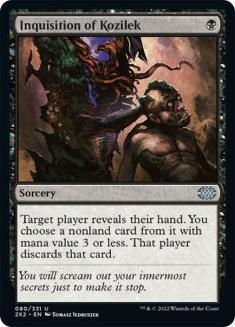
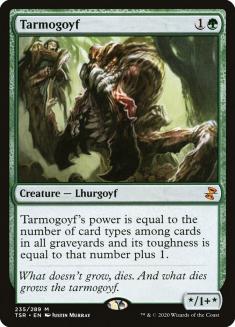
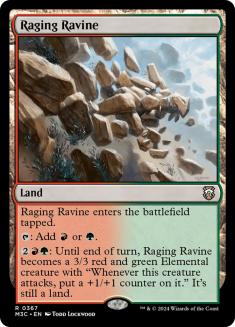

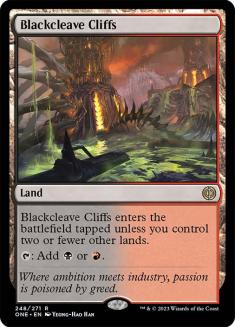
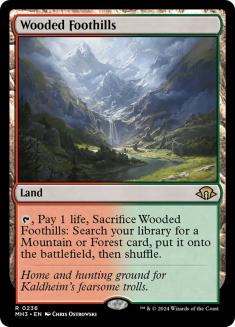
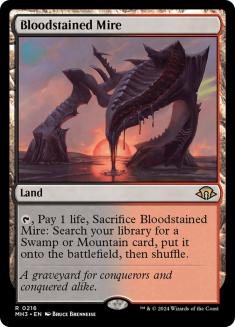
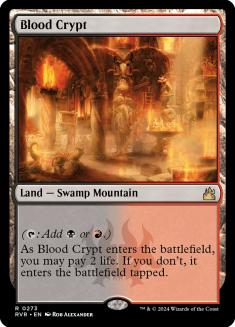

Not knowing the matchup, this is a close hand, but given how strong of a start it has, I believe it is a hand you should keep. The risk of flooding is
mitigated by the presence of Raging Ravine, and against many decks/draws it will not take much from the top of your deck in order to quickly establish
control. Unfortunately, I drew a few too many lands off the top of my deck and my opponent, who was also playing Jund, quickly ended the game with a strong
draw.
After winning game 2, I was met with this opening hand in the decider:



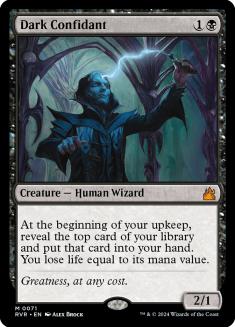


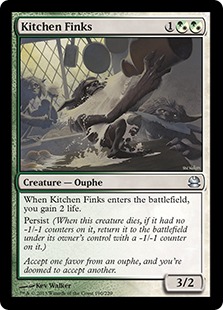
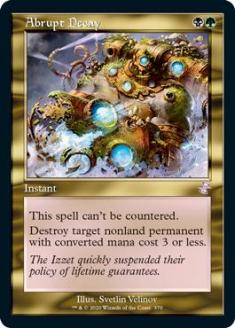
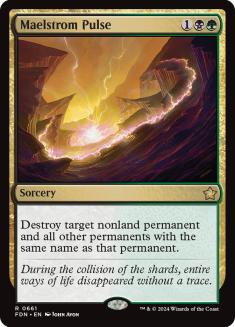

This hand is tempting because with a single land you have a good amount of action and the necessary removal to not fall behind to a Dark Confidant. Also,
you have your own Dark Confidant to possibly draw out of your screw. But missing out on early development in the mirror is a huge disadvantage because your
opponent can lean on your life total to force you into less than optimal plays. Also, the sideboard games involve threats like Kitchen Finks, Huntmaster of
the Fells, and Thragtusk that will make it difficult to stay even on board with spot removal spells.
My mulligan yielded the following six-card hand:


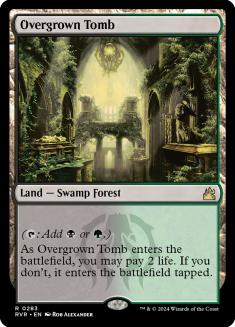


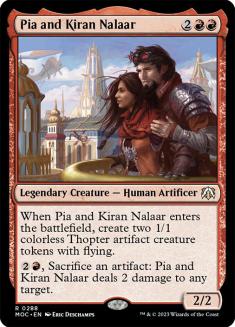

At this point I just wanted my seven back, but that’s not how Magic works. I decided to keep this because each mulligan is so backbreaking in a matchup
that involves plenty of one-for-one removal, and Pia and Kiran could provide enough value to get ahead as long as I used my scry to ensure I do not fall
too far behind. That scry showed me a copy of Liliana of the Veil, which I kept.
In hindsight, that is the decision I am least happy with, although it is still defensible. The problem is I was on the draw and Liliana is going to be very
poor against a double creature draw or a Kitchen Finks from my opponent. However, it is a card that can catch me up from my mulligan by cutting both
players off of resources and slowing the game down. It was a fine play, but it’s not one that I was fully conscious of the risks of, as it only left me
with one draw to find a removal spell for an opposing two-drop.
My risky play was soundly punished by a turn 2 Dark Confidant while my second draw step yielded a Maelstrom Pulse. After using the Pulse to kill Dark
Confidant before it did any more damage, I was left to hope my opponent did not have another threat to play on turn 4 after playing a Tarmogoyf on 3. He
had Huntmaster of the Fells, and from there I was too far behind to catch up.
At 1-1, I was slightly deflated since I feel like my draws put me at a decisive disadvantage, but that is Magic. You have to do as much as you can to put
up good finishes in spite of poor draws and take full advantage of the days where you draw especially well.
Round 3 saw me matched against one of the stronger players in the field in Andrew Tenjum, who I knew from watching earlier was on U/R Twin. The first game
was playing out normally until turn 5 when I sacrificed a fetchland only to see my sideboard Slaughter Pact in my maindeck. I quickly set my deck down and
checked my sideboard to see my maindeck copy of Pia and Kiran Nalaar and quickly called a judge to accept my game loss.
I was able to battle back to take game 2, but a mulligan in game 3 saw me keep a mediocre hand of four lands, Abrupt Decay, Terminate, which was vulnerable
to his turn 4 Jace, Architect of Thought that provided him an insurmountable advantage over the course of the game.
Frustrated at my carelessness, I considered staying in the tournament to get more practice with my deck, but with little on the line and a Grand Prix the
next day, I dropped in order to get more Standard practice in.
Grand Prix – Esper Tokens
I went to Indianapolis assuming I would play Bant Megamorph, and in fact, only brought Bant cards with me. But having been intrigued by the tokens deck
after talking about it with Michael Majors and with enough time to get more practice in with it, I decided to make the change.
Creatures (11)
Planeswalkers (6)
Lands (26)
Spells (17)

I won’t go into much detail about the list we played since Majors wrote about it here. My list differed from his by a single card in the
sideboard: I had a Dispel over the third Negate since I like how well it plays against Atarka Red, R/G Landfall, and Jeskai. The deck can fall behind at
times because its early threats are fairly small, so being able to deploy one of your big threats with protection from removal or a Temur Battle Rage combo
turn is a great way to catch up, and Dispel does that better than Negate.
I finished the Grand Prix a disappointing 6-3, losing round 9 to miss day 2. My first loss, to Jeskai Black, was almost certainly my fault, as I mistakenly
put myself behind a turn in order to ensure access to blue mana later in the game by finding a Battle land early despite not having a blue card in my hand.
I ended up losing an incredibly close game on the last turn, and the early tempo I gave up was critical.
I also lost to G/R Eldrazi Ramp despite our sideboard being built with that deck in mind because the matchup is rather poor. Esper Tokens does not provide
a great clock, so our plan was to morph into a pseudo-control deck, hopefully to capitalize on their lack of threat density by using Infinite Obliteration
to deal with Ulamog, the Ceaseless Hunger and our counterspells to deal with Ugin, the Spirit Dragon. To put it mildly, this plan did not come together,
and I got crushed despite my opponent’s less than stellar draws. This matchup is certainly an issue moving forward, although it looks like the ramp deck
will not have a long-term place in the metagame.
In spite of my poor performance, I came away impressed with the deck since it utilizes some great synergy while also retaining a high average card quality.
The token synergies let you play a good attrition game but also give rise to some devastating turns, usually involving an end of turn Secure the Wastes
followed up by a pump effect to either steal the game or put your opponent too far behind to catch up.
These pieces also play very well with Knight of the White Orchid, which gives you more mana to sink into your Secures or creature-lands as well as an extra
body for your Anthems. Knight also accelerates out your Wingmate Rocs, which is critical when playing against other Gideon + Wingmate decks.
Having these big turns give the deck a combo feel, which was great for me by giving me some direction in games and calmed me when I felt like I was unable
to press the advantage my efficient removal could grant me. In the back of my mind I knew that in a game where I was not pressured, eventually my synergies
would come together and my battlefield would come to dominate theirs. I look forward to working on the deck moving forward.
Lessons Learned
As I noted last week, the process of expanding your repertoire often
comes with a lot of losing and frustration, and that was apparent last weekend. The primary lesson I learned was that I am too impatient with my midrange
decks. The aggressive mindset I take means I am always looking to press my advantage and close the game, and those lines often involve risk. With faster
decks, that risk is merited since you are disadvantaged going long, but midrange decks mitigate that risk with their powerful cards and often you should be
looking for a line that furthers your advantage without opening yourself up to counter play. Striking that balance is the hallmark of good midrange play,
and right now, I do not have it.
The other important skill in playing midrange decks that I need to work on is using positioning to blank your opponent’s cards. When playing aggressive,
controlling, or combo decks, the structure of your deck naturally makes part of your opponent’s deck poor. Many control decks play no creatures to blank
opposing removal spells, for example. But with midrange decks, you have to be worried about every part of your opponent’s deck because you are preparing to
be able to play at every stage of the game and play many different types of games. In the same matchup, a single card may be the most important for one
game and the least important for the next, and being able to determine that is quite difficult.
Needing to have a direct answer for everything your opponent is doing is a poor plan, so the best midrange players navigate the game in such a way that
they can ignore some of their opponent’s cards. For example, if you can sequence your creatures in such a way that you are left with a Tarmogoyf and your
opponent is left with a Lightning Bolt, you are very far ahead; whereas if you leave yourself with a Dark Confidant in the same spot, you are both playing
off the top.
A lot of this comes down to knowing how the game is likely to play out over the next 3-5 turns and sequencing properly to get to a favorable spot while
leveraging the information you gain from your opponent’s plays and your own discard spells. Personally, I think I’m fairly good at sequencing, but poor at
leveraging the information my opponents give me. That may mean I should rely more on my discard spells than most players until I develop a better intuition
and a better framework for identifying how games are likely to play out based on the opening few turns.
Having learned a great deal from my experience and leaving with an idea of what I need to do moving forward to be successful, I can be happy with my
weekend despite my performance, which is quite rare. Hopefully my experiences help to clarify some of the concepts I wrote about last week and motivate you
to analyze and improve your game in a similar fashion.


